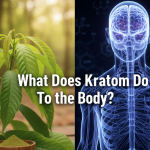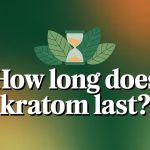In This Blog
- Get to know what is Kratom and how it is used.
- The effects of 7-OH Kratom and its difference with natural kratom.
- Kratom withdrawal symptoms, side effects, and dangers.
- How long does Kratom last in the body?
- What are the various Kratom addiction treatment programs, and Recovery options.
- How does Kratom differ with prescription opioids?
- Health and legal issues of the population.
- What are the health consequences of the use of kratom in the long term?
- The importance of professional treatment to recovery.
Kratom has become a popular drug in the U.S., and it is typically marketed as a natural product, particularly as pain medication or mood or energy. Nonetheless, in case we are speaking about Kratom in a scientific context, the alkaloid is there, and it is hydroxymitragynine (7-OH). Different studies have indicated that this compound is much stronger and addictive as compared to morphine itself. According to (NIDA, 2024), the 7-OH forms bind with the opioid receptors in a similar and stronger way. It is the reason why most of the kratom users get addicted, and they experience a lot of withdrawal and health-related problems. There have been numerous repeated warnings by the FDA and it has been working tirelessly to inform about the actual 7-OH Kratom effects and treatment. It is quite critical in case of recovery and safety of the populace.
What is kratom?
- It is extracted from the evergreen tree, which is Mitragyna speciosa, which is native to Southeast Asia.
- Kratom has long been known to assist in boosting energy levels, pain relief, and alleviating fatigue.
- According to Hassan et al. (2013), mitragynine (66%) and 7-OH (2%) are some of the active alkaloids carried by kratom.
- Kratom comes in a wide variety of forms which include powder, tea, capsules, and extracts.
- Kratom has numerous applications and enhances mood in addition to causing sedation with an increase in dosage.
100% Confidential Support is Available 24/7
No matter what you’re going through, you’re not alone. Our dedicated team is here to provide a safe, judgment-free space where you can talk openly and honestly. Whether you need emotional support, resources, or just someone to listen.
We’re here for you—completely confidential and always respectful of your privacy. Call us today!
What are the Kratom Effects?
- Low doses: When used in small doses, Kratom acts as a stimulant, e.g., raising energy levels, attention and alertness.
- High dosages: Kratom becomes a sedative at high doses (h ) and presents opioid-like performance (pain relief, relaxation).
- The 7-OH Kratom alkaloid has varying concentrations and its effects are unpredictable.
- According to (CDC 2024) reports that it has short-term and long-term relief, and it has long-term effects of addiction and organ toxicity.
Contact Palm Coast Treatment Solutions
Battling with Drug and Alcohol Addition? Remember, you are not alone and we are here to help you!
What are the Uses of 7-OH Kratom?
- It is promoted as a more potent and longer-lasting form of Kratom.
- The drug can be sold in 7-hydroxymitragynine extracts in the form of capsules, resins, or gummies.
- It is advertised as a pain medication, anxiety medication, or opioid withdrawal medication, although it is not approved by the FDA to be so.
- The higher potency is characterized by the higher risk of overdose, quick tolerance, and dependence.
What are the Kratom Dangers?
- The FDA report for the year 2025 warns that continuous use of kratom leads to seizures, confusion, and death linked to 7-OH.
- It also carries various contamination risks, such as salmonella, and it carries heavy metals (lead, nickel).
- According to (CDC 2024), there are many poison control reports, and over 3,400 cases were seen in the U.S. from 2014 to 2019.
- When there is false labeling and the market carries unregulated products, there are higher risks of increased dosage.
Overcome Addiction with Palm Coast Treatment Solutions.
Book an appointment.
What are 7-OH Kratom Side Effects?
Physical:
- Nausea, vomiting, and constipation.
- Pain in the muscles, accelerated heartbeat, and hypertension.
- Liver damage, seizures
Psychological:
- Drowsiness, dizziness
- Delusions and hallucinations.
- Depression and anxiety
It may lead to prolonged damage to health even when taken in a mild way.
How Long Does Kratom Last in the System?
- Effects: 2 -6 hours, with dose and form varying.
- In urine: detectable for 1–7 days.
- Blood and saliva: up to 24 hours.
- Hair tests: Can be used to detect use in weeks.
- Among the factors are the metabolism of the user, hydration, and frequency of use.
Overcome Addiction with Palm Coast Treatment Solutions.
Book an appointment.
Kratom vs Prescription Opioids
Feature | Kratom | Prescription Opioids |
Regulation | Unregulated | FDA-approved & strictly controlled |
Potency | Variable, depends on alkaloids | Consistent, medically dosed |
Safety | Linked to overdoses, contamination | Prescribed with oversight |
Addiction Risk | Moderate to high, especially 7-OH | High but managed in medical care |
It is known that kratom and 7-OH have action at opioid receptors. But the level of alkaloids makes kratom unreliable in its effects. Opioids are not used recklessly when they are used. However, kratom extracts can be extremely high in 7-OH.
Public Health and Legal Concerns Around Kratom
- DEA (2024) states that it is a “drug of concern.”
- High ER visits and cases of overdose have caused kratom to be banned in many states.
- This is because (FDA (2025) described contaminated products in the kratom that have been associated with Salmonella outbreaks.
- Other public health professionals have cautioned that market availability is not controlled and this places the user under dangerous risks uncontrollable by safety measures.
Overcome Addiction with Palm Coast Treatment Solutions.
Book an appointment.
What are the Long-Term Health Dangers of Kratom Use?
- Liver damage: It is associated with long-term use of kratom.
- Risks of the heart: Hypertension and arrhythmias.
- Neurological effects: Memory, confusion, and seizures.
- Social health deterioration: Chronic anxiety, depression, and psychosis.
- Effects on pregnancy: Babies can be born with withdrawal symptoms in case the mothers consume kratom during pregnancy.
All these dangers serve as evidence that it is unsafe and requires medical supervision for long-term use of kratom.
Contact Palm Coast Treatment Solutions
Battling with Drug and Alcohol Addition? Remember, you are not alone and we are here to help you!

Kratom Dependency and Withdrawal
Dependency Signs:
- Having to take more to experience.
- Cravings and compulsive use
- Neglecting responsibilities
Withdrawal Symptoms:
- Insomnia, muscular pain, sweat.
- Irritability, apprehension, and depression.
- High relapse and cravings.
Timeline:
- 12-48 hours following the final dosage: Symptom development.
- 3–7 days: Peak withdrawal.
- Weeks: Depression, fatigue, cravings.
Kratom Detection in Tests
- Kratom, or 7-OH, is not usually detected using standard drug tests.
- Alkaloids in the blood and urine can be detected by special panels.
- The policies in the workplace and the law differ: In some states, kratom is completely prohibited.
How is Kratom Addiction Treated?
The most secure method of getting over a 7-OH kratom dependence is professional care:
- Medical Detox: The withdrawal is under observation, and symptoms are treated.
- Therapy Programs: Cognitive Behavioral Therapy (CBT), relapse prevention.
- Medication-Assisted Treatment (MAT): non-addictive interventions to relieve cravings.
- Inpatient Programs: Outpatient programs are based on the severity.
What is the Importance of Professional Treatment in Kratom Addiction?
- The process of detoxing is dangerous because it carries the dangers of seizures and relapse.
- Clinical care and healthy stabilization are provided under adult treatment.
- Structured programs reduce the risks of relapse in treatment, MAT and aftercare.
- Family support and peer groups help patients develop strategies of recovery that are long-term.
Key Takeaways
- The effects of 7-OH-Kratom are more powerful than conventional kratom.
- Some of these risks are overdose, addiction, and withdrawal.
- Extracts are not regulated and are not safe.
- It is dangerous to detox without professional assistance.
The treatment programs for kratom addiction offer the most secure route towards recovery.
CALL US NOW
Palm Coast Treatment Solutions will iron out the details for you in a manner that will make you confident in your path to sobriety. That first simple call is your ticket to making DeLand Treatment Solutions your solution for addiction. Get the freedom from addiction that you deserve today.
FAQs
Is 7-OH the same as kratom?
No. Kratom is the entire leaf, and 7-OH (7-hydroxymitragynine) is its most active alkaloid. When it is concentrated, it is far more potent and dangerous than the conventional kratom.
What is the effect of 7-hydroxymitragynine?
It is a powerful binding of the opioid receptors, where it creates effects akin to morphine, pain relief, sedation, and euphoria. It is, however, also associated with rapid tolerance, dependence, and withdrawal.
Will 7OH show up on a drug test?
The majority of the common drug tests do not test for kratom or 7-OH. It can be identified by specialized toxicology screens, most commonly in legal or medical investigations.
Why is kratom being banned?
Several states have prohibited kratom due to the increasing number of ER visits, poison control reports, and risk of contamination. It is a drug of concern to the federal agencies (DEA, 2024).
Is it possible to have people go to rehab with kratom?
Yes. Treatment centers currently have kratom addiction recovery programs and medical detox, counseling, and relapse prevention, like opioid treatment.
What to do about addiction withdrawal symptoms?
It is the safest one through medical detox and professional care. Home detox is risky. Therapies and MAT, as well as support groups, are used to manage the symptoms and minimize relapses.
How much 7-OH is in kratom?
Natural kratom leaves typically have approximately 2 percent 7-OH, though extracts are produced to concentrate to 98 percent (FDA, 2025), providing an extreme danger of overdose and addiction.
What is the duration of a kratom high?
The length of a kratom high averages 2-6 hours. But at high concentrations of 7-OH, extracts effects can feel stronger and longer, and yield often dangerous side effects and more intense withdrawal symptoms after the effects.






















